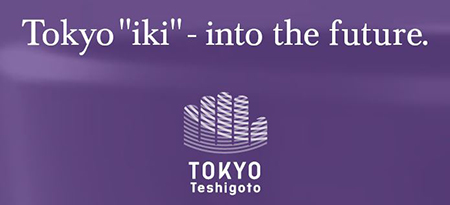Edo Kiriko
(Cut Glassware)

- On colored glass, a path of light is engraved.
- Edo Kiriko (cut glassware), born in the 19th century, is a craft that drew from a European cut-glass technique. Another Kiriko product tradition is found in the Satsuma (currently Kagoshima Prefecture) area outside of Edo. While Satsuma Kiriko lost the patronage of those in power at that time and the tradition was temporarily suspended, Edo Kiriko maintained its popularity as everyday products having simple beauty for ordinary people and its tradition has been handed down to today’s generation. Including the Nanako pattern, which looks like a series of fish eggs in a reflected light, a range of some 20 traditional patterns inspire gaiety at the modern dining table. Craftsmen are keen to manufacture new products using original cuts in addition to inherited traditional patterns. Whereas Satsuma Kiriko uses a shading technique to cut Irokise (colored) glass 2 mm to 3 mm thick, Edo Kiriko creates sharpness and clear shininess, created by fine carving of colored glass of a little less than 1 mm thick. Kiriko is popular because it reflects the light like a kaleidoscope when seen from above and Kiriko’s simple beauty, created by designs on the transparent glass, is once again being highly acclaimed. Craftsmen are manufacturing vessels of various shapes, for sake, beer, and wine, and are exploring durable designs that are also convenient for everyday use.
| Main Areas of Manufacture | Koto Ward, Edogawa Ward, Sumida Ward |
|---|---|
| Designation/ Certification Date | July 15th, 1985 (Tokyo Certification) January 30th, 2002 (National Certification) |
| Traditionally Used Raw Materials | Glass materials (crystal glass, soda lime glass) |
Traditional Technologies and Techniques
- Sumitsuke (ink application) involves the use of a bamboo stick to apply ink to the surface of glassware. This preparatory process creates a basic outline of the patterns (designs) to be cut in glass.
- Arazuri (rough grinding) involves the basic grinding of glass in accordance with the pattern applied to the surface using the sumitsuke process. Emery powder (a grinding agent) is applied to the surface of a metal grinding wheel. This then comes into contact with the glass, and major elements of the pattern are etched accordingly. The next process (Sanbankake) is the application of finer grain emery powder in order to carry out more detailed pattern etching. Depending on designs, three different types of grinding wheel may be used.
- Ishikake (whetstone grinding) involves the use of a whetstone grinder to smooth and better define patterns etched during earlier grinding processes. Natural whetstones from the southern island of Kyushu are used.
- Kenma (or Migaki) is the process of polishing the glass. It involves even finer-detail grinding of those surfaces that are to be non-transparent. It also brings out the traditional luster associated with transparent glass surfaces. When doing this step, polishing powder is used with a wooden polishing wheel (made of either Paulownia or Willow). The design is carefully polished in order to heighten both the transparency and luster of the glass.
History and Characteristics
Kiriko is a form of glass cutting in which grinders and whetstones are applied to the surface of glassware, and a number of different cutting (or grinding) techniques are employed in order to manufacture products.
The originator of the traditional craft of Edo Kiriko (cut glassware) was Kagaya Kyubei, who ran a glassware store in Edo's Odenmacho (in the vicinity of modern Nihonbashi).
Kyubei is said to have learned his craft in Osaka, which at one stage was a leading center of glassware production in Japan. After completion of his apprenticeship, he returned to Edo and opened a glassware store in the city, where items such as eye glasses, thermometers and hydrometers were produced.
Edo Kiriko techniques deliver exquisite patterns that are both sparkling and lustrous when applied to suitable glassware such as "crystal glass," such techniques delivering products of great intrinsic value.
As Japan moved from the Taisho Era to the Showa Era, manufacturing evolved so quickly that "cut glass" came to be synonymous with "artistic glass," with the industry reaching its pre-war zenith around 1940.
In contemporary times, approximately 80% of Edo Kiriko manufacturing occurs in Koto and Sumida Wards.
Concerning Satsuma Kiriko (cut glassware produced in Kyushu), which is as equally loved as Edo Kiriko, it resulted from the Satsuma Domain (who ruled over modern Kagoshima Prefecture) inviting the Edo glassware manufacturer, Yotsumoto Kamejiro, to establish glassware production in the domain. This industry grew quickly as the government of Satsuma fully supported its development.
Contact Details
| Manufacturing Area Cooperative Name | EDO KIRIKO COOPERATIVE ASSOCIATION |
|---|---|
| Address | 2-40-5 Ojima, Koto Ward, Tokyo 136-0072 |
| TEL | 03-3681-0961 |
| Website | http://www.edokiriko.or.jp/ |






